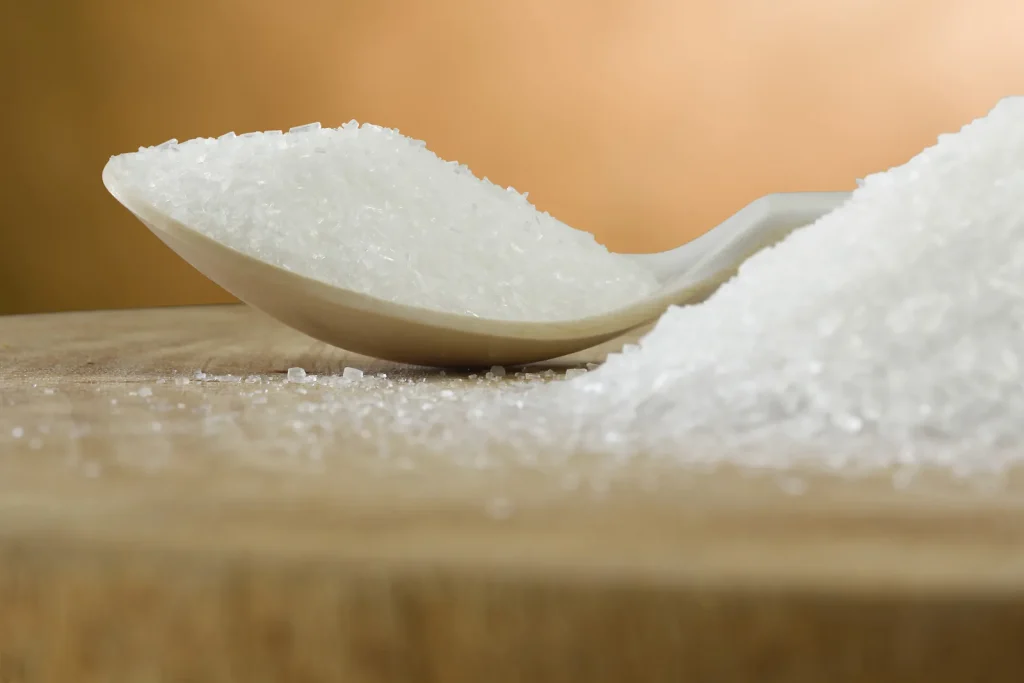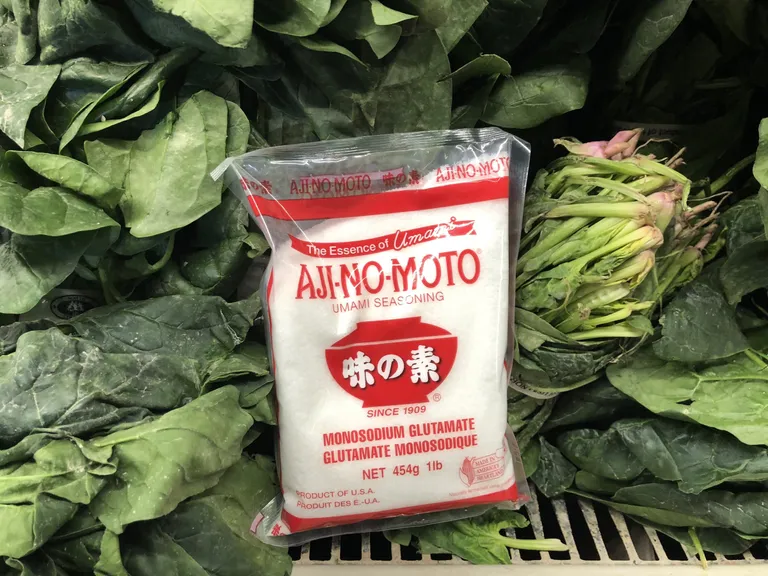Monosodium glutamate, more commonly known as MSG, has long been a topic of debate in the culinary world. Some people have treated it with suspicion, while others swear by its ability to elevate the taste of almost any dish.
In recent years, science has shown that MSG is safe to consume in moderate amounts, and chefs around the globe are once again embracing it as a versatile ingredient. If you’ve ever wondered how to use MSG in cooking, this article will walk you through everything you need to know.
1. What Is MSG?
MSG is the sodium salt of glutamic acid, a naturally occurring amino acid found in many foods such as tomatoes, Parmesan cheese, mushrooms, and seaweed. It enhances the umami flavor, often described as savory, rich, or meaty. While we naturally enjoy umami from foods like soy sauce or aged cheeses, MSG provides a more concentrated and consistent way to boost that same flavor profile.
The compound was first isolated in 1908 by Japanese chemist Kikunae Ikeda, who noticed that seaweed broth had a savory taste distinct from sweet, salty, sour, and bitter. He identified glutamate as the source of this unique taste and created MSG as a seasoning to make it easier to use in cooking.
2. Why Use MSG in Cooking?
Enhances Umami Flavor – MSG boosts the depth of taste in soups, sauces, stir-fries, and stews. It makes food taste fuller and more satisfying.
Reduces Sodium Intake – Because MSG contains about one-third the sodium of regular table salt, it can help you cut back on overall sodium without sacrificing flavor.
Balances Flavors – MSG doesn’t overpower a dish; it rounds out the flavors, making ingredients taste more harmonious.
Versatile in Different Cuisines – While commonly used in Asian cooking, MSG is equally effective in Western dishes such as pasta sauces, meat rubs, and even snack foods.

3. General Guidelines for Using MSG
When using MSG in cooking, the key is moderation. Think of it as you would salt—too much can overwhelm the dish, while the right amount enhances it beautifully. Here are some general tips:
-
Start Small: A good rule of thumb is 1/4 to 1/2 teaspoon of MSG for a dish serving 4 people.
-
Combine with Salt: MSG works best alongside salt, not as a complete replacement.
-
Add During Cooking: Sprinkle MSG while cooking so it blends into the dish, much like you would with other seasonings.
-
Taste and Adjust: Just as with salt, taste the dish before adding more.
4. Practical Ways to Use MSG in Everyday Cooking
4.1. Soups and Stews
MSG is particularly effective in broth-based dishes. If your chicken soup tastes bland, adding a pinch of MSG can bring out the natural flavors of the vegetables and meat. Similarly, beef stew or ramen broth gets an extra savory depth with a small amount of MSG.
Tip: Dissolve 1/4 teaspoon MSG into your pot of soup, then taste before adding more.
4.2. Stir-Fries
Asian stir-fries often rely on the balance of salty, sweet, sour, and umami. Soy sauce already contains natural glutamates, but a small sprinkle of MSG can boost the overall flavor.
How to use: Season vegetables and meat lightly with salt, then add a dash of MSG toward the end of cooking. This helps intensify the savory notes without making the dish too salty.
4.3. Marinades and Meat Rubs
MSG works well when mixed with spices in dry rubs or liquid marinades. It penetrates the meat, enhancing the flavor from within. For grilled meats or roasted poultry, this creates a more robust taste.
Example: Mix MSG with garlic powder, onion powder, paprika, and black pepper for a versatile seasoning blend.
4.4. Pasta Sauces
Tomato sauces naturally contain glutamates, but MSG can make them taste even richer. If your spaghetti or lasagna sauce feels flat, just a pinch of MSG can elevate it.
Tip: Add MSG while simmering the sauce, allowing it to meld with the tomato and herb flavors.
4.5. Rice and Grain Dishes
Plain rice, quinoa, or couscous can sometimes lack flavor. Adding MSG during cooking, or mixing it into fried rice, transforms these side dishes into savory, satisfying accompaniments.
How to use: Add MSG to the water while cooking rice, or season fried rice along with soy sauce and sesame oil.
4.6. Snack Foods
Many commercial chips, popcorns, and crackers already use MSG for that irresistible “can’t stop eating” effect. At home, you can sprinkle a little MSG on popcorn, roasted nuts, or even roasted vegetables.
Example: Toss popcorn with melted butter, a pinch of salt, and a light sprinkle of MSG for a theater-worthy snack.

5. Tips for Perfect MSG Use
Don’t Overdo It: Too much MSG can make food taste artificial or overly savory. Stick to small amounts.
Combine with Natural Umami Sources: Pair MSG with foods naturally high in glutamates, such as mushrooms, seaweed, tomatoes, or cheese. This creates a layered depth of flavor.
Use in Low-Sodium Cooking: If you are reducing salt intake for health reasons, replace part of the salt with MSG. For example, use half the salt you normally would and add a pinch of MSG.
Experiment Gradually: Try MSG in simple dishes first, like soup or scrambled eggs, before moving on to complex recipes.
6. Common Myths About MSG
For years, MSG has been linked to health concerns such as “Chinese Restaurant Syndrome,” a term coined in the 1960s after anecdotal reports of headaches and discomfort following MSG consumption. However, modern scientific studies have shown no consistent evidence that MSG poses health risks for the general population when consumed in normal amounts.
Myth: MSG is unnatural. In reality, MSG is derived from natural fermentation processes similar to those used in making yogurt or vinegar.
Myth: MSG causes headaches. Scientific reviews have not found reliable evidence connecting MSG to headaches in most people.
Myth: MSG is only used in Asian food. MSG is widely used in snack foods, canned soups, frozen meals, and restaurant cooking worldwide.
7. Frequently Asked Questions
How much MSG should I use per serving?
About 1/8 to 1/4 teaspoon per serving is usually sufficient.
Can I use MSG instead of salt?
Not entirely. MSG enhances umami but doesn’t provide the same salty taste. It works best in combination with salt.
Is MSG safe for kids?
Yes, in small amounts, MSG is considered safe for children, just like for adults.
Where can I buy MSG?
MSG is sold in most supermarkets under brand names like Accent, Ajinomoto, or generic “MSG seasoning.”

Conclusion
MSG is a powerful culinary tool that can take your cooking to the next level when used correctly. Far from being the harmful additive it was once thought to be, MSG is safe, widely used, and extremely effective at bringing out the best in your food.
Whether you’re making a comforting bowl of soup, a sizzling stir-fry, or a simple snack, a pinch of MSG can transform the flavors, making your dishes richer, more satisfying, and deeply savory.
